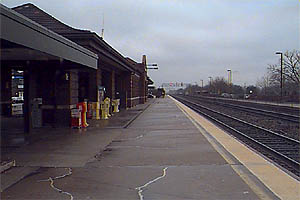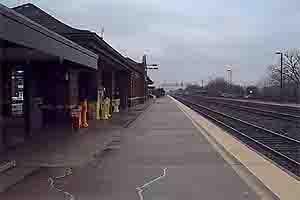

The JPEG (Joint Photographics Experts Group) format is also standard throughout the web. It was created by a technical committee a number of years after GIF was created.
The files usually have the .jpg suffix.
The JPEG format is most commonly used for photographs.

A photo of the Naperville Metra station
Image dimensions: 300x200; Image size: 21K
The goals of the JPEG format was very different than GIF. Preserving the quality of an image was paramount.
| JPEG supports 24-bit color: 8 each for Red, Green and Blue (RGB) | |
| These are called "true color" images because their quality is near the true colors of the original image |
Hey, what about that "web palette" stuff! Well, if your monitor doesn't support colors referenced in your images, then your browser does its best to approximate the colors with what it has.
In JPEG format you control how much compression goes on. This is usually offered in some way by your image editing program.
There's a catch! JPEG implements a "lossy" compression scheme. The smaller your file size, the more detail is lost (forever!) from your image.
Here's out train station compressed some:

The Naperville Metra train station again
Compressed to 13KB
Use JPEG files for:
| Photos | |
| Detailed or complex graphics |
JPEG cons are:
| Compression can lead to bad images | |
| You have to know about compression and control it |